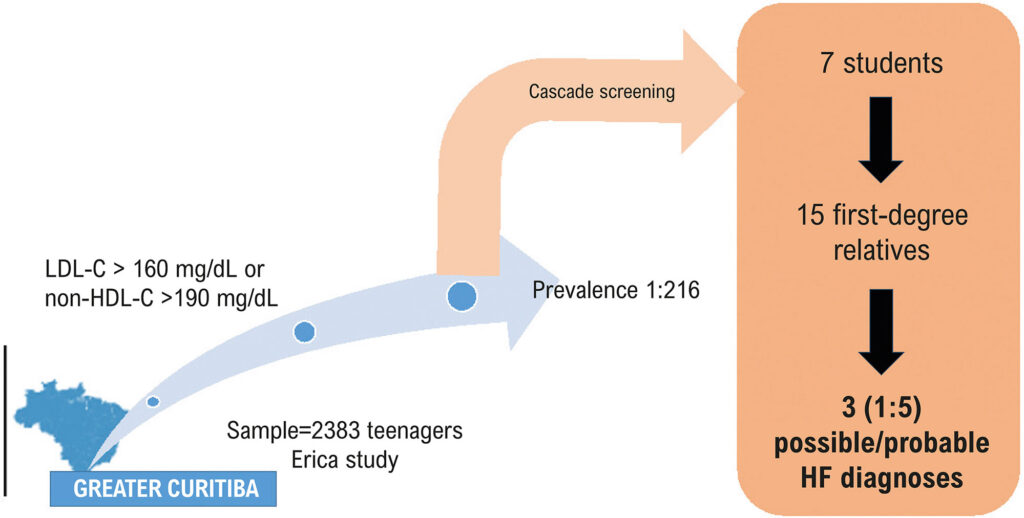Arq. Bras. Cardiol. 2025; 122(3): e20240468
Cascade Screening in Adolescents with Lipid Disorders Suggestive of Familial Hypercholesterolemia: Findings from the ERICA Study in Curitiba
This Original Article is referred by the Short Editorial "Detecting Familial Hypercholesterolemia in Adolescents: Universal Screening is Key".
Abstract
Background
Familial hypercholesterolemia (FH) is a common genetic cause of premature coronary heart disease due to prolonged exposure to high levels of LDL cholesterol (LDL-C). Its prevalence in the heterozygous form ranges from 1:200 to 1:500, and early diagnosis is fundamental for treatment and risk reduction. Cascade screening is recommended upon the identification of index cases.
Objectives
To assess the prevalence of lipid disorders suggestive of FH in students aged 12 to 17 years participating in the ERICA study in Curitiba and to determine the prevalence of FH based on clinical and laboratory criteria in these adolescents and their first-degree relatives undergoing cascade screening.
Methods
Using data from the ERICA study, adolescents with LDL-C levels > 160 mg/dL or non-HDL cholesterol > 190 mg/dL were identified, along with their first-degree relatives. The clinical diagnosis of the study participants was based on the DUTCH MedPed criteria. Statistical significance was defined as P < 0.05.
Results
Eleven adolescents with lipid disorders suggestive of FH were identified among the 2,383 evaluated (1:216). Of these, 7 students and 15 first-degree relatives were assessed. None of the adolescents had a diagnosis of possible FH confirmed by the clinical score. However, 3 family members (20%) were diagnosed with possible/probable FH.
Conclusion
Although the clinical score application did not confirm any cases among adolescents with lipid disorders suggestive of FH, indicating a limitation of the diagnostic method in this population, cascade screening identified potential cases in first-degree relatives.
Keywords: Cholesterol; Dyslipidemias; Familial hypercholesterolemia
327

